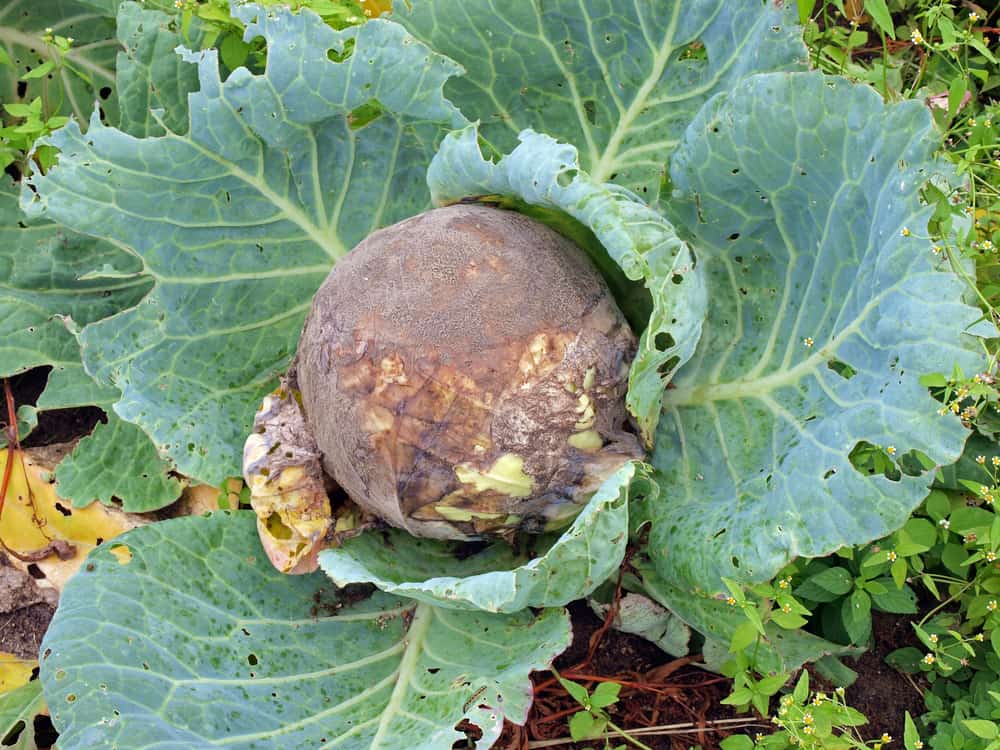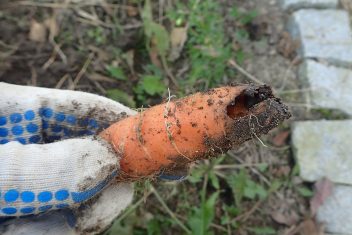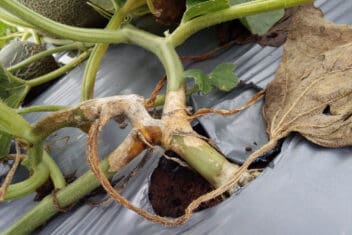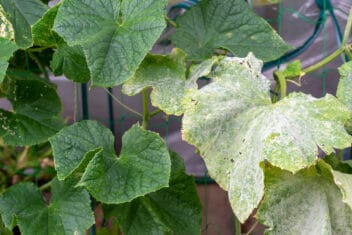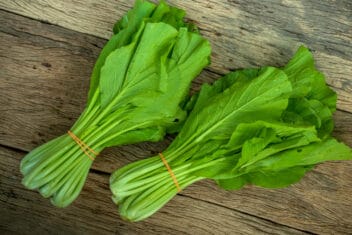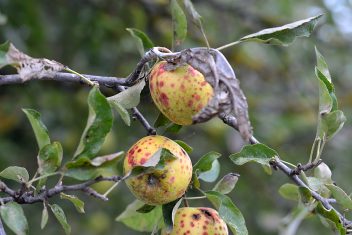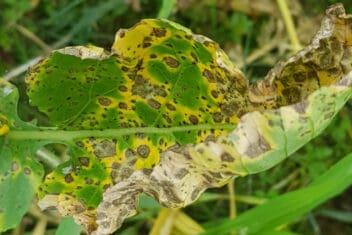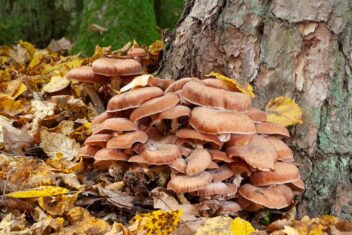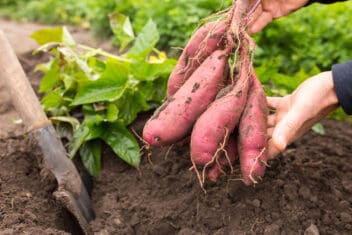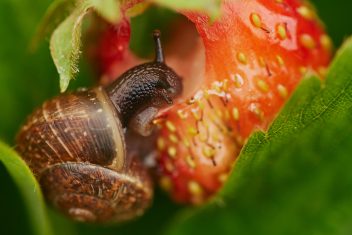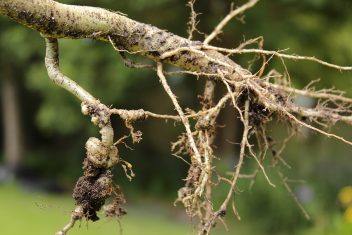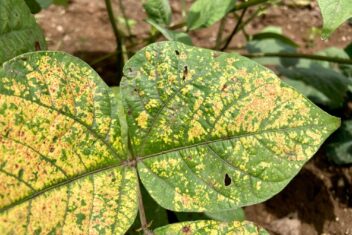Sometimes it’s overwhelming how many pests and diseases that affect our plants, it’s a wonder we manage to grow anything.
Nature is a wonderful thing, and diseases are just a part of the natural lifecycle in our gardens. Every season we have to overcome whatever the environment throws at us. Sometimes we beat it, and other times it beats us.
Botrytis blight is one of those diseases that plays a part in the recycling of natural material, but we don’t want it in our gardens on our flowers and crops, thank you very much.
What is Botrytis Blight?
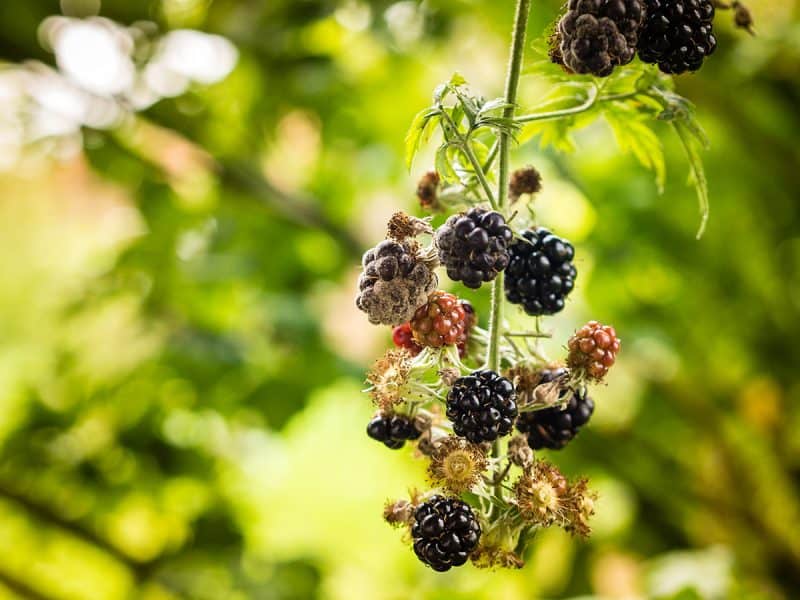
Botrytis blight is a common and serious fungal disease that affects many plants in the garden and greenhouse. Sometimes known as gray mold, it will affect all parts of plants, except the roots.
Plants that are damaged, diseased, or otherwise stressed are more susceptible.
Caused by the fungus Botrytis cinerea, it spreads quickly in the right conditions, generally cool temperatures around 50-60ºF combined with high relative humidity.
Botrytis is also severe in high temperatures and can cause major issues in greenhouses, where humidity is often high.
Symptoms of Botrytis Blight on Plants
The leaves, flowers, stems, buds, and bulbs are affected by botrytis. It doesn’t attack the roots. Here are the symptoms to watch for:
Flowers, Stems, and Leaves
When a plant is infected with botrytis, the flowers and buds will turn brown and develop abnormally. Spots appear on the flowers; the older the flower, the quicker it rots.
The stems and leaves develop brown spots. Gray or silvery mold may show up after cool, wet weather.
Symptoms on Berries
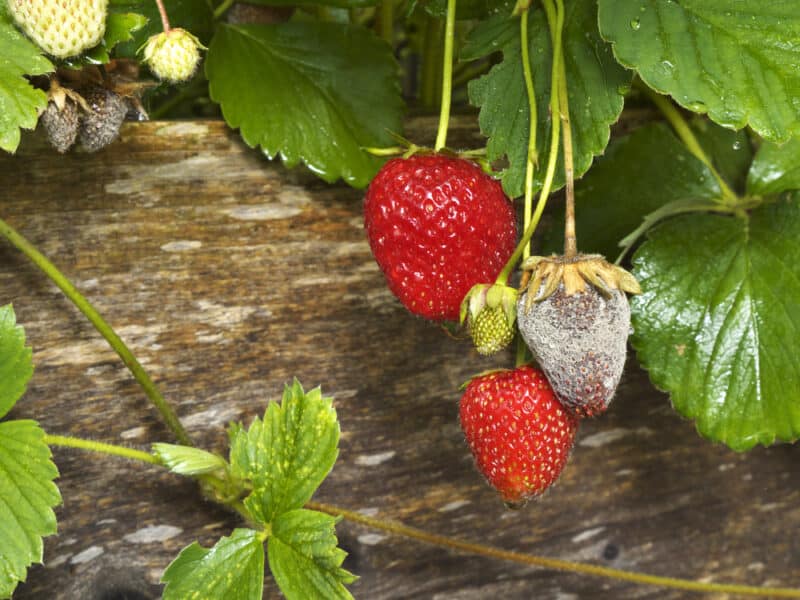
Unfortunately, botrytis is pretty common in berry plants like strawberries and blueberries, especially if the fruit or plant is damaged by insects.
With berries, the young flowers are most susceptible, and the disease often starts as drying out or browning of the flower buds before they fall off the plant, known as bud blast.
In the early stages on fruits, the initial infection will appear as a dark spot that rapidly enlarges. If you don’t remove the infected fruit from the plant, a gray mold forms.
The disease may start on the fruit while still young and green, and as it matures, the disease becomes more pronounced.
Depending on the fruit, the initial appearance may differ, though. On pears that are young or green, the splotches appear light gray to green like a water-soaked spot. On brown pears and bright red apples, the spots appear dark brown to black.
On apples, you often see browning and softening at either the stem bowl or calyx ends. This brown spot enlarges quickly. If you leave this fruit on the tree, it will eventually mummify and infect next year’s harvest through spores.
As the fruit matures and the infection develops further, you may smell a cider-like odor, accompanied by the gray growth that will appear swiftly, and spread rapidly.
Sometimes you won’t notice the disease until the fruit is mature and harvested. Allowing infected berries to touch others during the harvesting process will cause the disease to spread.
In the right conditions, it only takes around 48 hours for a healthy fruit to become infected and become a rotting mass after harvest.
You have likely seen this when you bought a container of strawberries at the store and realized one of them is rotting and forming a gray mold, infecting all those it touches in the container.
This disease is commonly seen in parts of the plant (or garden) with poor airflow and high humidity. The disease can spread rapidly to other plants and berries.
Plants That Are Impacted
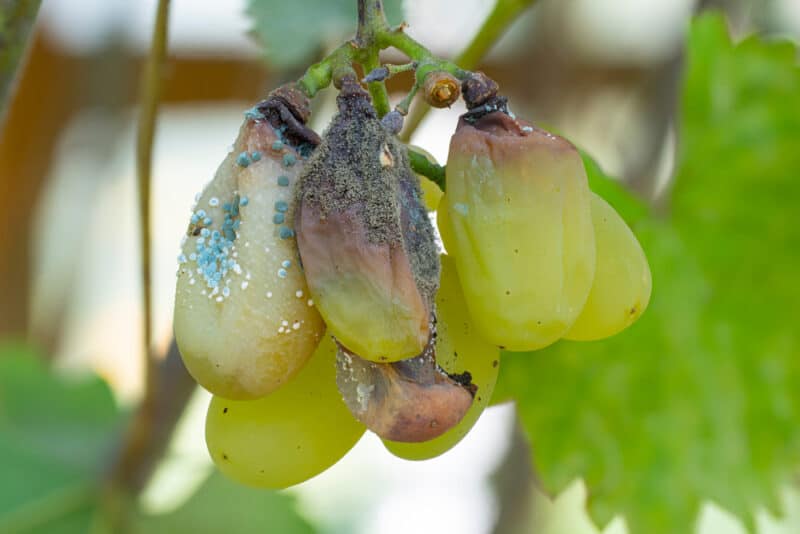
Botrytis can appear on fruit and vegetables, especially on over-ripe fruit and damaged plants.
Pears and apples are susceptible, especially after harvesting and in cooler temperatures like cold stores or root cellars. This is why you should check your stored fruit in a root cellar often to prevent the decay from spreading to all your stored fruit.
Fruit trees that can become infected include (but are not limited to):
Vegetables that can become infected by botrytis include:
Some susceptible flowers include (but definitely not limited to)
Most berries can be infected including:
- Strawberries
- Blueberries
- Raspberries
- Blackberries
- Currants
- Gooseberry
Lifecycle of Botrytis
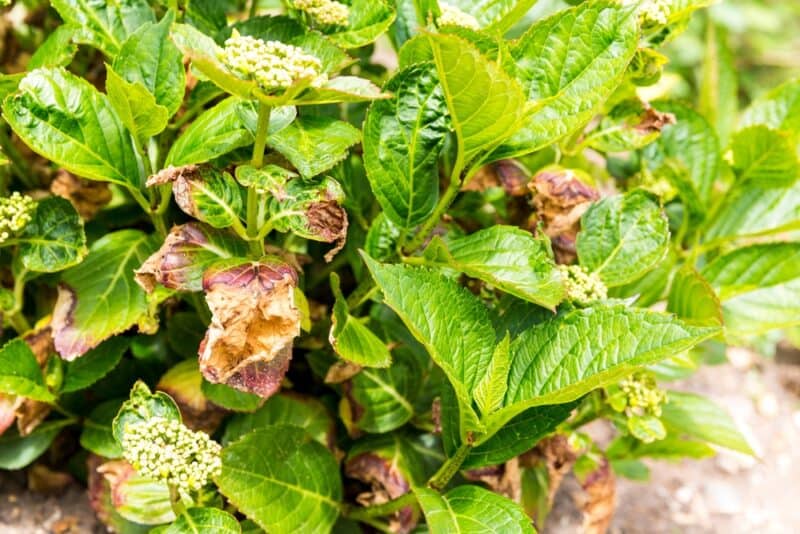
Botrytis is what is called a filamentous necro-tropic. Basically, that means it is a fungus that survives on dead tissue of fruits and plant material. Think about that in terms of prevention. Remove as many opportunities as you can for the fungal spores to take hold.
The fungus survives on organic matter in the orchard or garden such as the mummified fruit left on trees or dropped to the ground, or infected material left where it falls.
If the temperatures get low or high, the fungus produces sclerotia, which is food storage, to survive until the conditions become favorable again. A sclerotia is a compact mass of hardened mycelium with nutrients, enabling the fungus to wait out unfavorable conditions.
Once the conditions become right, with temperatures within 55-75°F, the mycelia (fungal threads) are grown, and spores are dispersed by water, wind, and rain.
Botrytis doesn’t just infect formed fruit or plant parts that have been punctured or damaged, it can infest a plant much earlier in the development process. The spores can infect buds of ornamental flowers, fruit, and vegetables before they fully develop.
The fungus can also cause infection at the flowering stage, while the fruit is developing, during harvest, or by way of secondary infection when stored fruit with the fungus infects others in storage with it.
Ideal Conditions For Botrytis
Here are the perfect environmental conditions to create the perfect breeding ground for botrytis blight.
- Damaged, aging, or weak plant tissue or fruit
- Parts of plants damaged by pruning, insects, or pinching
- Temperatures between 55-75ºF combined with high humidity
- Wet, rainy conditions
- Mummified fruit left on trees or where they fall
- Lack of airflow
- Poor garden and orchard hygiene
How to Prevent Botrytis
Prevention is much better than trying to deal with botrytis blight after an infection. Following simple rules in the garden and orchard can go a long way to preventing this fungus from getting a hold.
Sometimes, you can’t prevent it, but you can limit the growth and spread.
Cultural Control
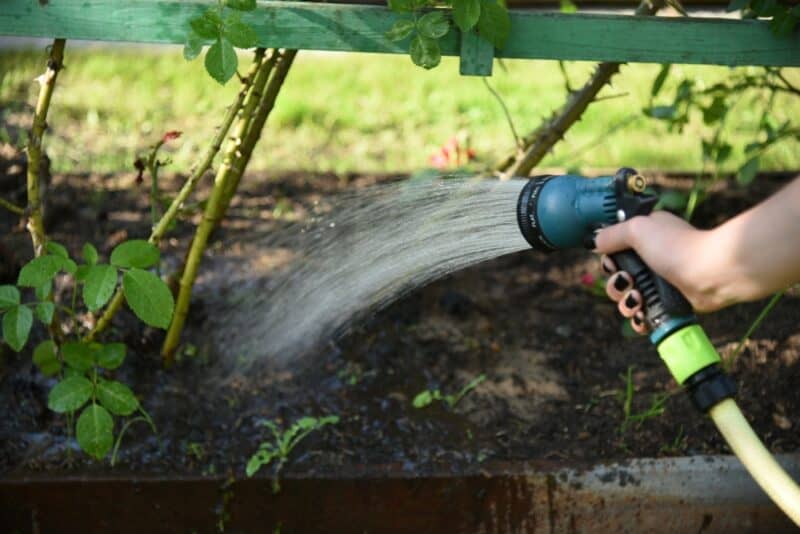
- Avoid watering overhead and wetting the leaves. Water at the soil level, or use an irrigation system like drip feeding.
- Water early in the day to allow foliage you may get wet and the soil to dry out a bit as the day warms up.
- Reduce humidity where you can. Although you can’t control the environment, you can plant in open areas, promote good airflow through pruning, don’t overcrowd the garden, and reduce humidity in glasshouses where botrytis blight can spread rapidly. Once in a greenhouse, it’s hard to eradicate.
- Harvest at the right time. Some fruit like gala apples and Honeycrisp start to split at the stem if left on the tree too long. The split provides a convenient entry for botrytis blight.
- Minimize damaging or puncturing the fruit at harvest or when removing dead or diseased branches.
- Keep the ground clean. When debris falls to the ground, remove it as soon as possible.
- Spray with neem oil, which acts as a natural fungicide. Spray at dusk to avoid pollinators such as bees, and follow instructions on the packaging.
Treating Botrytis

Timing is critical when using fungicides for botrytis blight. Anti-fungal sprays are a good idea if you struggle with this disease.
Bonide Fung-onil is a good all-purpose produce. Generally, you will need to apply it at four different stages:
- First to reduce the spores on flowers and fruit, spray at the budding stage.
- At the fruitlet stage, spray before the fruit gets bigger than two inches.
- The third one should be around mid-July.
- The last should be around seven days before harvest.
Of course, this only works if you are harvesting all at once, or if you know you will be harvesting the bulk of your crop in a short space of time. I have several fruit trees in a hot, humid environement that are ready for harvest at different times in the season.
To keep it simple, I complete the last spray at the same time.
Natural Remedies For Botrytis Blight
If you’re not keen on chemicals or store-bought remedies, try natural remedies for botrytis. There’s no good evidence that things like garlic or onion sprays work, but you can try them and see if they work for you.
If you want more tried-and-true natural remedies, use a neem spray or a product that contains Bacillus amyloliquefaciens strain D747 like Southern Ag Garden Friendly Biological Fungicide.
Botrytis is quick to become resistant to fungicides. This is why it’s imperative to prevent it by keeping the disease out through garden and orchard hygiene. Make sure you concentrate on:
- Weed control
- Leaf litter pick-up
- Remove mummified fruit and vegetation
- Improve airflow
- Don’t crowd plants
